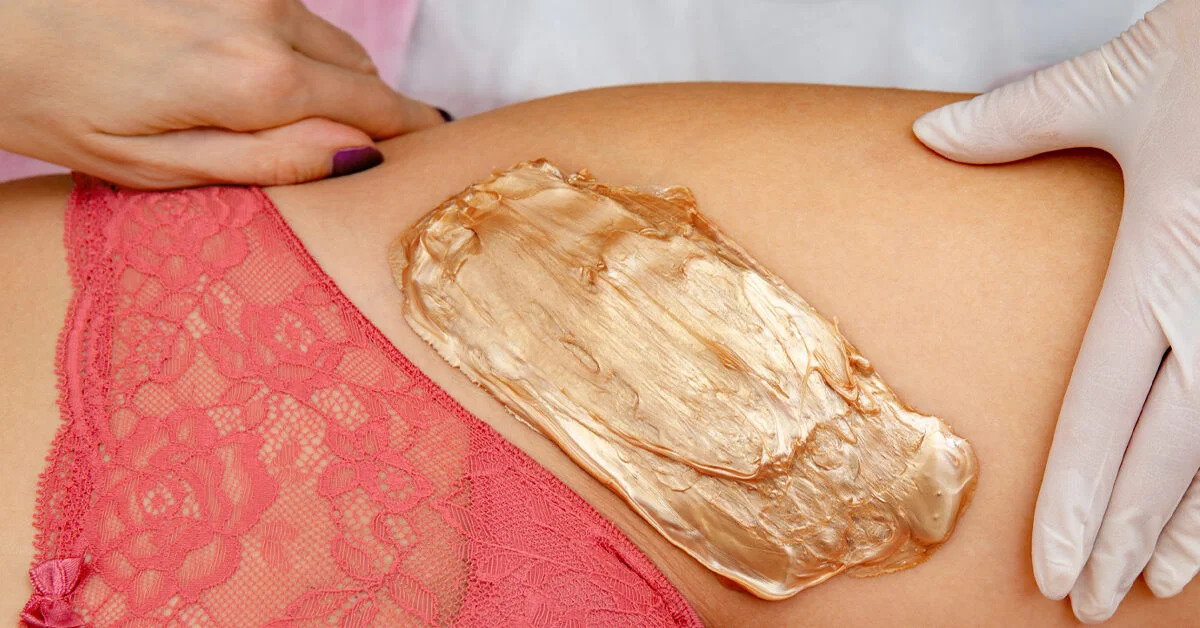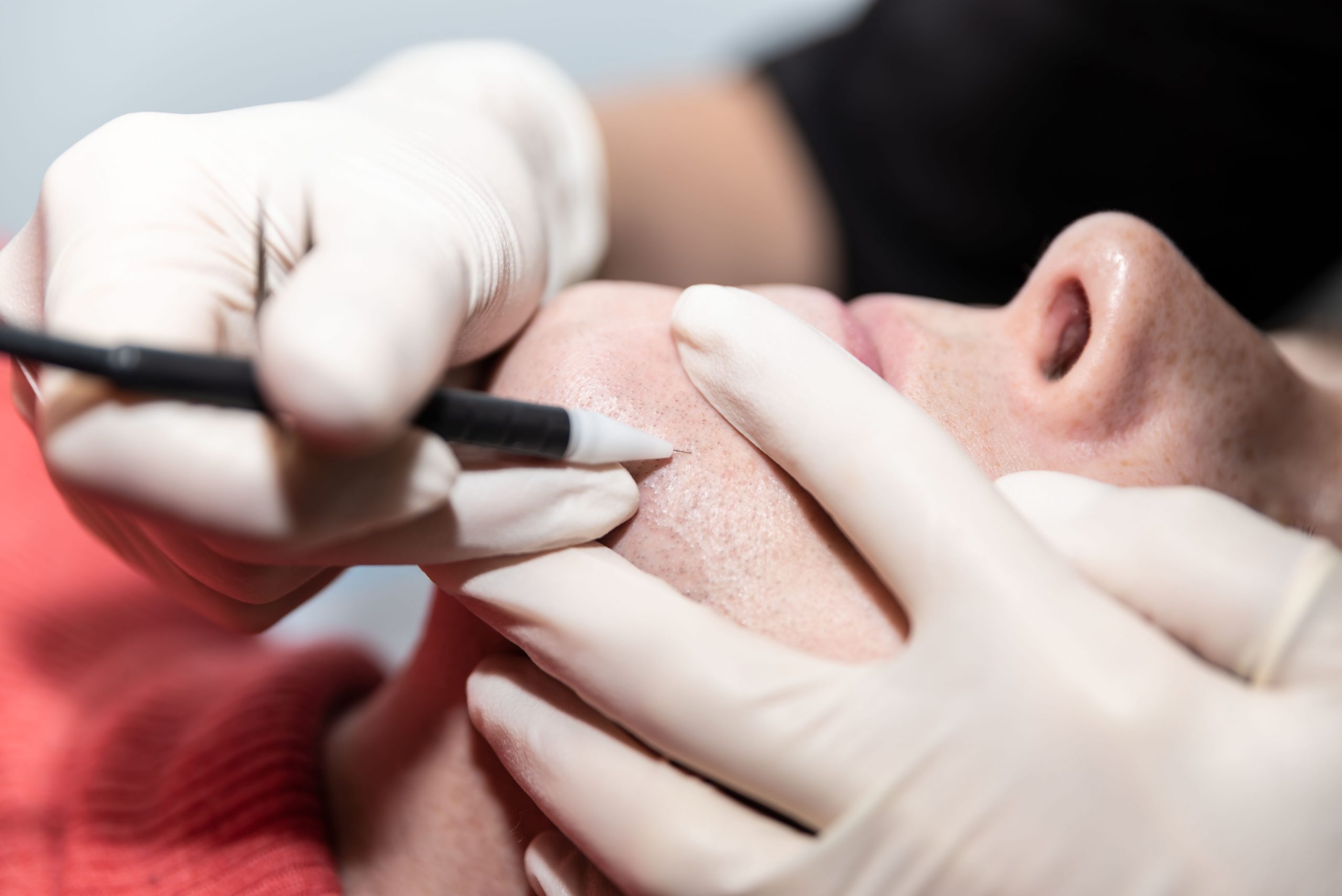Home>FAQs>How Long Does It Take For Laser Hair Removal To Work


FAQs
How Long Does It Take For Laser Hair Removal To Work
Modified: September 23, 2023
Find answers to common questions about laser hair removal, including how long it takes for the treatment to show results. Discover the timeline for achieving smooth, hair-free skin with this popular procedure.
(Many of the links in this article redirect to a specific reviewed product. Your purchase of these products through affiliate links helps to generate commission for Under-tec.com, at no extra cost. Learn more)
Table of Contents
- Introduction
- Understanding How Laser Hair Removal Works
- Factors Affecting the Effectiveness of Laser Hair Removal
- Number of Laser Hair Removal Sessions Required
- Time Taken for Visible Results to Appear
- Managing Expectations during the Laser Hair Removal Process
- Tips for Optimizing the Effectiveness of Laser Hair Removal
- Conclusion
Introduction
Welcome to the world of laser hair removal, a revolutionary method for getting rid of unwanted hair. If you’re tired of dealing with the constant hassle of shaving, waxing, or plucking, laser hair removal may be the solution you’ve been searching for. This advanced technology provides a long-term reduction in hair growth, resulting in smoother, silkier skin.
But how long does it actually take for laser hair removal to work? Well, the answer isn’t as simple as you might think. Laser hair removal is a process that requires multiple sessions to achieve optimal results. Each person’s journey is unique, as there are various factors that can affect the effectiveness and speed of the treatment.
In this article, we will explore the factors that influence the effectiveness of laser hair removal, how many sessions are typically required, and when you can expect to see visible results. We will also provide some tips on how to optimize the effectiveness of laser hair removal for the best outcome.
Before we dive into the details, it’s important to understand how laser hair removal works. This treatment involves the use of a concentrated beam of light that targets the hair follicles, effectively damaging them and inhibiting hair growth. The pigment in the hair follicles absorbs the light energy, which then converts into heat and disables the hair follicles without causing harm to the surrounding skin.
Laser hair removal is a safe and effective method for long-term hair reduction, and it can be used on various areas of the body, including the face, legs, underarms, bikini line, and more. It offers a convenient alternative to traditional hair removal methods, saving you time, money, and the frustration of dealing with unwanted hair on a daily basis.
Now that you have a basic understanding of how laser hair removal works, let’s explore the factors that play a role in its effectiveness.
Understanding How Laser Hair Removal Works
Laser hair removal is a highly effective and popular method for removing unwanted hair. It works by targeting the hair follicles with a concentrated beam of light, which is absorbed by the pigment in the hair follicles. This absorption of light energy converts into heat, which ultimately damages and disables the hair follicles, preventing any future hair growth.
The process is carried out using a specialized laser device that emits a specific wavelength of light, allowing it to target the hair follicles precisely. The laser’s energy is absorbed by the pigment, melanin, present in the hair follicles. This melanin absorbs the light energy, which is then converted into heat, causing damage to the follicle without causing harm to the surrounding skin.
It’s important to note that laser hair removal is most effective on dark, coarse hair and works best when there is a significant contrast between the hair and the skin tone. This is because the laser is attracted to the melanin in the hair follicles, so the darker the hair, the better the absorption of the laser energy. Lighter hair colors such as gray, red, or blonde may not respond as effectively to laser hair removal.
During a laser hair removal session, the laser device is moved over the target area, emitting pulses of light that target the hair follicles. The treatment can be slightly uncomfortable, with some describing it as a mild stinging sensation or a rubber band snapping against the skin. However, most people find the discomfort to be tolerable, and it diminishes as the session progresses.
It’s important to note that laser hair removal is a gradual process and requires multiple sessions to achieve the desired results. This is because the laser can only effectively target hair follicles that are in the active growth phase, known as the anagen phase. Hair follicles go through different growth stages, including anagen, catagen, and telogen. Each individual hair follicle is in a different growth stage at any given time, which is why multiple sessions are necessary to treat all the hair in a particular area.
Now that we have a good understanding of how laser hair removal works, let’s explore the factors that can influence its effectiveness.
Factors Affecting the Effectiveness of Laser Hair Removal
While laser hair removal is a highly effective method for long-term hair reduction, several factors can influence its effectiveness. It’s important to consider these factors when undergoing laser hair removal to ensure you achieve the best possible results.
Skin Tone and Hair Color: The effectiveness of laser hair removal is greatly influenced by the contrast between your skin tone and the color of your hair. The laser targets the pigment in the hair follicles, so individuals with lighter skin tones and darker hair tend to respond best to treatment. However, advancements in technology have made laser hair removal accessible to a wider range of skin tones and hair colors.
Hormonal Changes: Hormonal changes, such as those that occur during pregnancy or menopause, can affect hair growth patterns. It’s important to consider hormonal fluctuations when undergoing laser hair removal, as these changes can impact the treatment’s effectiveness. Consulting with a medical professional or experienced laser technician can help determine the best approach for your specific situation.
Skin Sensitivity: Individuals with sensitive skin may experience different responses to laser hair removal. It’s essential to communicate any skin sensitivities or conditions, such as eczema or psoriasis, to your laser technician before starting the treatment. They can adjust the laser settings accordingly to minimize discomfort and potential side effects.
Hair Thickness and Growth Cycle: Laser hair removal is most effective on thick, coarse hair. Finer or lighter hair may require additional sessions or alternative treatment options. Additionally, since hair grows in cycles, multiple sessions are needed to target hair follicles during their active growth phase.
Previous Hair Removal Methods: The effectiveness of laser hair removal can be influenced by previous hair removal methods used in the target area. Shaving is recommended before the treatment, as it allows the laser to target the hair follicles more effectively. Waxing, plucking, or using depilatory creams should be avoided before laser hair removal, as these methods remove the hair follicles temporarily.
Expertise and Equipment: The expertise of the laser technician and the quality of the equipment used play vital roles in the effectiveness of laser hair removal. It’s important to choose a reputable and experienced provider who uses high-quality laser devices. This ensures that the treatment is administered correctly and that the desired results are achieved.
It’s crucial to consult with a qualified laser technician or dermatologist to assess your skin type, hair color, and other individual factors before starting laser hair removal. They can evaluate your unique circumstances and provide personalized recommendations to optimize the effectiveness of the treatment.
Now that we understand the factors that can affect the effectiveness of laser hair removal, let’s explore the number of sessions typically required for visible results.
Number of Laser Hair Removal Sessions Required
The number of laser hair removal sessions required varies depending on several factors, including the targeted area, hair thickness, growth cycle, and individual response to treatment. While some individuals may see significant results after just a few sessions, others may require more sessions to achieve the desired outcome.
On average, most people undergo between 6 to 8 laser hair removal sessions. However, it’s important to note that this is just an estimate and can vary depending on individual circumstances. Some individuals may require fewer sessions, while others may need more to achieve optimal results.
The reason multiple sessions are necessary is because hair follicles go through different growth stages. Laser hair removal is most effective when the hair follicles are in the active growth phase, known as the anagen phase. However, not all hair follicles are in this phase at the same time.
During each session, the laser targets hair follicles in the anagen phase and disables them. However, hair follicles in the catagen or telogen phase are not affected, as they are not actively growing hair. Over time, dormant hair follicles will enter the anagen phase, and subsequent laser hair removal sessions will target them.
The interval between sessions is typically around 4 to 6 weeks, depending on the area being treated. This allows for maximum effectiveness in targeting hair follicles in the anagen phase. It’s important to follow the recommended treatment schedule and not skip sessions to ensure optimal results.
It’s also worth mentioning that maintenance sessions may be required after completing the initial laser hair removal sessions. These maintenance sessions help to ensure that any new hair growth is effectively targeted and treated. The frequency of maintenance sessions varies among individuals but is typically spaced out over several months.
Keep in mind that laser hair removal is a gradual process, and visible results may not be immediately noticeable after the first few sessions. Patience is key, as you will start to see a reduction in hair growth over time. By completing the recommended number of sessions and following the treatment plan, you can achieve long-lasting results.
It’s important to consult with a skilled laser technician or dermatologist who can evaluate your specific needs and provide personalized guidance on the number of sessions required for your desired results. They will consider factors such as your skin type, hair color, and other individual considerations for an effective treatment plan.
Now that we’ve discussed the number of sessions required, let’s explore how long it takes for visible results to appear.
Time Taken for Visible Results to Appear
When undergoing laser hair removal, it’s important to have realistic expectations regarding the time it takes for visible results to appear. Laser hair removal is a gradual process and does not provide immediate results after the first session.
The timeline for visible results can vary from person to person, depending on factors such as hair thickness, hair growth cycle, and individual response to treatment. While some individuals may start noticing a reduction in hair growth after just a few sessions, others may require more sessions before significant results become visible.
On average, you can expect to start seeing noticeable results within 3 to 6 months of starting laser hair removal treatment. By this point, the treated area will have experienced a significant reduction in hair growth, with finer and lighter hair regrowth compared to before the treatment.
It’s important to understand that the timeline for visible results is not linear. In the early stages of treatment, you may still notice hair growth as the laser targets actively growing hair follicles. However, with each subsequent session, the hair growth will become sparser and less noticeable.
It’s also important to note that laser hair removal provides long-term hair reduction, rather than complete hair removal. While some individuals may experience permanent hair reduction, others may require occasional maintenance sessions to target any new hair growth that may occur in the future.
During your laser hair removal journey, it’s crucial to follow the recommended treatment schedule and complete the recommended number of sessions. Consistency is key in achieving optimal results. Skipping sessions or spacing them too far apart can delay the timeline for visible results.
Managing expectations is important when it comes to laser hair removal. It’s essential to understand that each person’s hair growth patterns and response to treatment are unique. Some individuals may experience faster results, while others may require more patience and additional sessions.
If you have any concerns or questions about your progress during the laser hair removal process, don’t hesitate to consult with your laser technician or dermatologist. They can assess your individual situation and provide personalized guidance and reassurance.
Now that we understand the time it takes for visible results to appear, let’s discuss how to manage expectations during the laser hair removal process.
Managing Expectations during the Laser Hair Removal Process
Managing expectations during the laser hair removal process is crucial to ensure a positive experience and satisfactory results. While laser hair removal offers long-term hair reduction, it’s important to have realistic expectations and understand the limitations of the treatment.
First and foremost, it’s important to understand that laser hair removal is not a one-time solution. It requires multiple sessions to effectively target all the hair follicles in the treatment area. Patience is key, as visible results may take time to appear.
It’s also important to remember that laser hair removal provides hair reduction rather than complete hair removal. While many individuals experience significant hair reduction, it’s unlikely to completely eliminate all hair in the treated area. The goal of laser hair removal is to minimize hair growth and provide long-lasting results.
During the treatment process, there may be some hair regrowth between sessions. This is normal and should not be a cause for concern. It’s important to avoid other hair removal methods, such as waxing or plucking, as this can disrupt the hair growth cycle and affect the effectiveness of laser hair removal.
Another aspect to consider is that individual responses to laser hair removal can vary. Factors such as hair thickness, color, and skin type can influence the treatment’s effectiveness. Consult with your laser technician or dermatologist to understand how these factors may impact your specific results.
During the treatment sessions, it’s common to experience minor side effects such as redness, swelling, or slight discomfort. These are usually temporary and subside within a few hours or days. If you experience any persistent or concerning side effects, it’s important to contact your laser technician or dermatologist for guidance.
Open communication with your laser technician is essential throughout the process. Voice any concerns or questions you may have regarding the treatment or your progress. They can provide guidance, reassurance, and adjust the treatment plan if necessary.
Lastly, it’s important to have realistic expectations regarding the permanency of the results. While many individuals experience long-term hair reduction, some hair regrowth may occur over time. Maintenance sessions may be required to target any new hair growth that may appear in the future.
By managing expectations and understanding the process, you can approach laser hair removal with a positive mindset and realistic goals. Remember, each person’s experience is unique, and results may vary. Work closely with your laser technician to ensure the best possible outcome.
Now, let’s explore some tips for optimizing the effectiveness of laser hair removal.
Tips for Optimizing the Effectiveness of Laser Hair Removal
To ensure the best possible results with laser hair removal, it’s important to follow these tips and guidelines:
- Choose a reputable provider: Select a trusted and experienced laser technician or dermatologist who uses high-quality laser devices. This ensures that the treatment is administered correctly and safely.
- Stay out of the sun: Avoid excessive sun exposure before and after your laser hair removal sessions. Sunburned or tanned skin can be more sensitive to the laser and may increase the risk of adverse effects.
- Avoid other hair removal methods: Refrain from plucking, waxing, or using depilatory creams in the treatment area before laser hair removal. These methods remove the hair follicles temporarily and can interfere with the laser’s targeting.
- Shave the treatment area: Shave the targeted area a day or two before your laser hair removal session. This allows the laser to penetrate the hair follicles more effectively without interference from the surface hair.
- Follow the recommended treatment schedule: Adhere to the recommended interval between sessions to ensure optimal results. Consistency is key in targeting hair follicles during the active growth phase.
- Avoid harsh skincare products: During the laser hair removal process, avoid using harsh exfoliants, astringents, or any skincare products that may irritate or sensitize the treated area. Opt for gentle and soothing skincare products instead.
- Stay hydrated: Drink plenty of water and keep your skin hydrated before and after the sessions. Hydrated skin tends to respond better to laser treatment and can help minimize any potential side effects.
- Be patient and realistic: Understand that laser hair removal is a gradual process and visible results may take time to appear. Manage your expectations and stay committed to the treatment plan to achieve long-lasting results.
- Attend maintenance sessions if needed: After completing the initial sessions, discuss with your laser technician whether maintenance sessions will be necessary to target any new hair growth in the future. Follow their recommendations to maintain the desired results.
By following these tips, you can optimize the effectiveness of your laser hair removal treatment and improve your overall experience. Remember to consult with your laser technician or dermatologist for personalized guidance based on your specific needs and circumstances.
Now, let’s wrap up with a brief recap of what we’ve covered in this article.
Conclusion
Laser hair removal is a highly effective and popular method for long-term hair reduction. While it requires multiple sessions and patience, it offers a convenient and reliable solution for those seeking to get rid of unwanted hair.
Throughout this article, we have explored how laser hair removal works, including how the laser targets the hair follicles to inhibit future hair growth. We have also discussed the factors that can affect the effectiveness of the treatment, such as skin tone, hair color, and hormonal changes.
Furthermore, we have addressed the number of laser hair removal sessions typically required, which can vary depending on individual circumstances. Additionally, we have outlined the time it takes for visible results to appear and highlighted the importance of managing expectations throughout the process.
To optimize the effectiveness of laser hair removal, we have provided useful tips, including choosing a reputable provider, avoiding sun exposure, and following the recommended treatment schedule. We also emphasized the significance of staying hydrated, being patient, and considering maintenance sessions if needed.
It’s important to remember that everyone’s experience with laser hair removal is unique, and results may vary. Consulting with a qualified laser technician or dermatologist is crucial to assess your individual needs and create a personalized treatment plan.
In conclusion, laser hair removal offers an innovative and effective solution for long-term hair reduction. By understanding how it works, managing expectations, and following the recommended guidelines, you can achieve smoother, silkier skin and experience the benefits of laser hair removal.
So, if you’re ready to say goodbye to the hassles of shaving, waxing, or plucking, consider laser hair removal as a reliable and convenient option to achieve the smooth, hair-free skin you desire.










